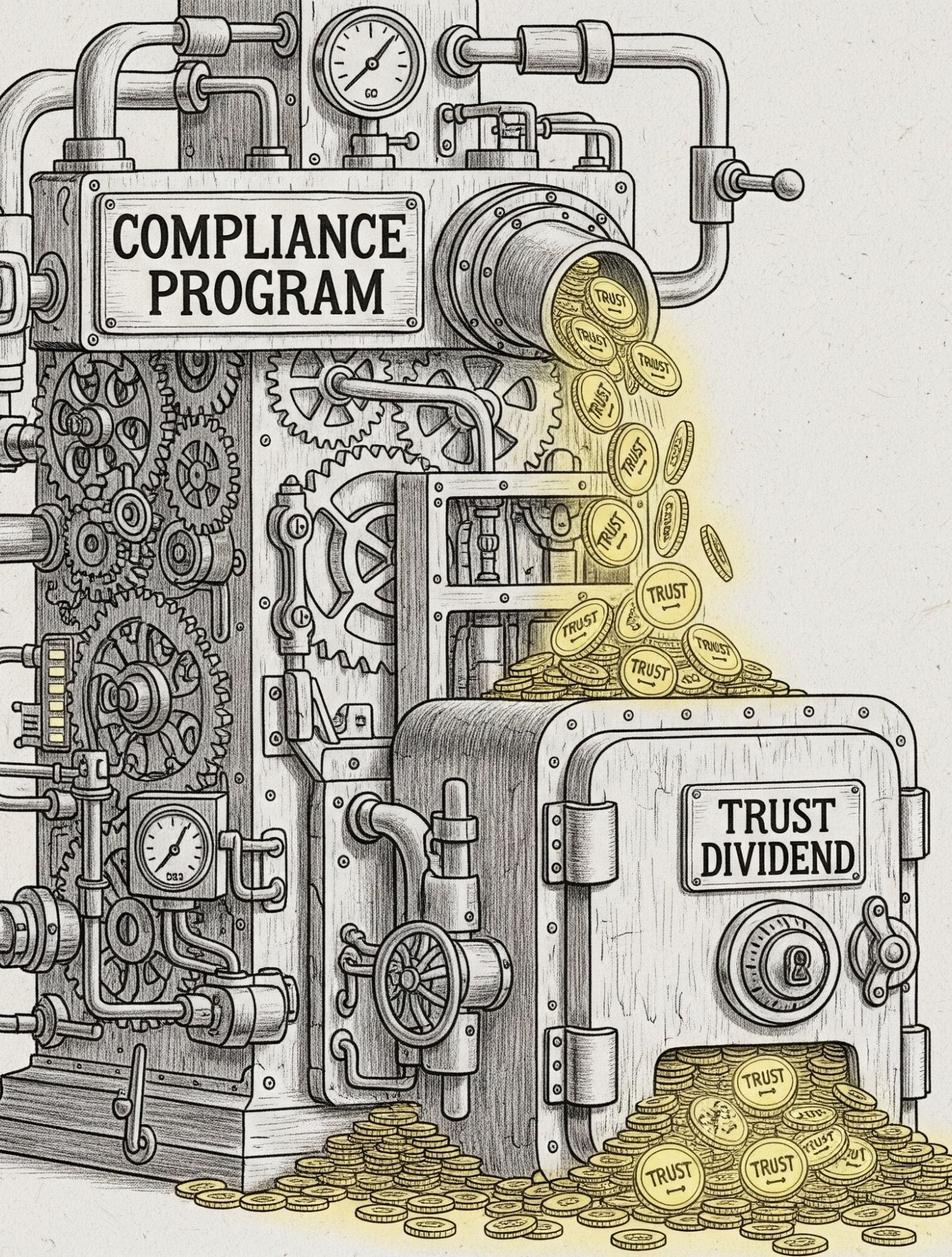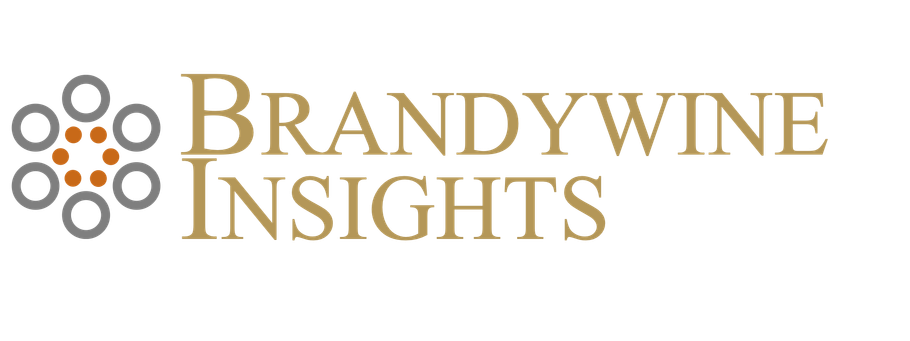Suby Joseph
Weaponizing Compliance into a Strategic Moat
For decades, the C-suite has treated the compliance department like the weird uncle at a holiday party: you know he has to be there, you hope he doesn't cause a scene, and you quietly resent how much he's costing you. Meanwhile, compliance has been the ultimate boat anchor—a non-negotiable, ever-expanding cost center that slows innovation and feels like a tax on growth.
The numbers are enough to make any CFO need a stiff drink. The annual cost of federal regulations bleeds over $2 trillion from the U.S. economy, saddling the average American household with a hidden tax of $16,016. For a financial firm, compliance can devour 19% of its annual revenue.
But here’s the punchline: the only thing more expensive than compliance is non-compliance. The average cost of failing to comply is a staggering 2.71 times higher than the cost of getting it right. A data breach linked to a compliance failure will set you back an average of $5.05 million.
This is where the strategic conversation must change. When a line item commands this much capital, it’s no longer an operational cost. It's an underperforming asset class. This isn't a call to spend more on compliance; it's a call to fundamentally re-architect it from a defensive shield into an offensive weapon. This is the executive blueprint for building a "Compliance Fortress"—a system designed not just to avoid fines, but to actively generate revenue, accelerate growth, and construct an unbreachable competitive moat that leaves your rivals wondering what hit them.
The Trust Dividend: Your New Unfair Advantage

In a market drowning in skepticism, trust is a measurable financial asset, and a world-class compliance program is its primary production engine. For the CEO, this is about forging an impregnable brand. For the CFO, it's about de-risking the enterprise and unlocking new revenue streams.
From Checkbox to Contract: Winning and Accelerating Deals
A superior compliance posture is a potent sales weapon. In 2023, nearly a third of organizations lost a new business deal because they lacked a required certification, while 72% pursued audits specifically to win new business. For B2B firms, a SOC 2 report is a golden ticket that can slash the sales cycle by weeks, letting you bypass the soul-crushing 200-item security questionnaires that bog down enterprise deals.
Unique Strategy: Compliance as Content Marketing
Stop hiding your compliance work in the back office and start marketing it. Your pristine compliance record, your ethical standards, and your transparent processes are not just for regulators—they are powerful marketing assets. Turn your adherence to complex regulations into clear, compelling stories that build trust. BlackRock did this brilliantly with their "How the World Retires" interactive report, turning a complex topic into a humanized narrative that saw six times the engagement of their average post. By showcasing your expertise and ethical framework, you differentiate your brand and attract higher-quality clients who value integrity.
Case in Point: The FinTech Fast Pass
Mulligan Funding, a company that provides business loans to small and mid-sized businesses invested in achieving SOC 2 compliance. The results were immediate and quantifiable: a 150% ROI within the first year, driven by a 30% increase in client retention and a 10% reduction in operational costs. Their compliance status became a key pillar of their value proposition, allowing them to win deals their non-compliant rivals couldn't even compete for.
The RegTech Arsenal: Your Tech Stack

Trying to manage modern compliance with manual processes is like trying to win a Formula 1 race on a bicycle. It’s a guaranteed way to burn cash, invite errors, and get lapped by the competition. With the pace of regulatory change exploding from 10 updates per day in 2008 to over 200 by 2016, the manual model is officially broken. Regulatory Technology (RegTech) is the arsenal that powers the compliance fortress. It is not an expense; it is a high-yield investment in operational supremacy.
The Modern Compliance Tech Stack
A modern compliance fortress isn't built with a single piece of software; it's an integrated stack of technologies designed to automate, analyze, and protect. Each component solves a specific problem, creating a powerful, unified system.
Technology Solution
AI / Machine Learning
Natural Language Processing (NLP)
Robotic Process Automation (RPA)
Cloud Computing & APIs
Blockchain
Core Compliance Function
KYC/AML, Fraud Detection, Transaction Monitoring
Regulatory Change Management, Communications Monitoring
Regulatory Reporting, Data Aggregation
Data Management, System Integration
Audit Trail, Transaction Integrity
Key Operational Benefit
Real-time anomaly detection, predictive risk scoring, reduction of false positives.
Automated analysis of regulatory documents, real-time monitoring of employee communications for compliance breaches.
Automation of manual data entry and report generation, streamlined workflows.
Scalable infrastructure, seamless integration with existing GRC systems, centralized "single source of truth" for compliance data.
Creation of immutable, transparent records for transactions and compliance activities.
Strategic Advantage
Lower fraud losses, faster client onboarding, enhanced brand trust, becomes a preferred partner for other financial institutions.
Proactive adaptation to new rules, reduced risk of misconduct, faster response to regulatory inquiries.
Reduced operational costs, improved accuracy and timeliness of regulatory filings, frees up human capital for strategic tasks.
Increased operational agility, lower IT overhead, unified view of risk across the enterprise, enables faster product development.
Unalterable audit trails for regulators, enhanced security and integrity of financial transactions, builds stakeholder confidence.
Unique Strategy: The Compliance Data Refinery
Your compliance function is sitting on a goldmine of data that it collects for regulatory purposes. This "data exhaust" is one of your most valuable, and most underutilized, assets. By applying analytics, you can refine this raw data into pure business intelligence. Analyze transaction patterns to spot emerging market trends, use onboarding data to understand customer behavior, and identify operational bottlenecks before they become crises. This transforms your compliance department from a cost center into a strategic intelligence hub.
Case in Point
Financial House, a firm with a complex compliance process spanning multiple jurisdictions, was struggling with manual checks and siloed teams. By implementing a RegTech solution from Moody's, they orchestrated their entire Know Your Business (KYB) and onboarding process. The system automated complex checks, centralized all customer documentation, and created a single, streamlined workflow. This not only made their process audit-ready on demand but turned their compliance function into a well-oiled machine.
The Regulatory Moat: Forging Insurmountable Barriers to Entry

In strategy, a "moat" is the ultimate prize: a sustainable competitive advantage that protects your market share and profits. While often associated with brand or scale, one of the most formidable and defensible moats is built from the very complexity of regulation itself.
The Economics of Exclusion
Compliance costs are not linear; they are disproportionately punishing for smaller firms. A small community bank might spend nearly 9% of its non-interest expenses on compliance, while a massive institution spends less than 3%. In pharma, the decade-long, multi-billion-dollar journey to get a drug approved is a barrier that is simply insurmountable for most startups. This creates a powerful structural barrier that chokes off potential competitors.
Unique Strategy: Regulatory Judo
This is the art of using the weight and complexity of the regulatory environment against your rivals. It involves three moves:
- Master the Maze: Get so good at navigating the regulatory labyrinth that you can move faster and with more confidence than anyone else. While competitors are stuck in review cycles, you're launching products.
- Weaponize Your Audits: Treat your external auditors not as vendors, but as strategic partners. Involve them early in your planning cycle and leverage their cross-industry perspective to build a compliance program that is years ahead of your competitors.
- Shape the Battlefield: Proactively engage with regulators and industry groups. By helping to shape future standards in a way that aligns with your existing technological and operational strengths, you can effectively raise the cost of entry for everyone else.
Case in Point: The Little Biotech That Could
Navigating the FDA is the ultimate final boss for a small biotech firm. But it's not impossible. Bone Health Technologies, a California startup, developed the first-ever prescription wearable for preventing bone loss. They successfully navigated the FDA clearance process - a journey made possible by crucial early-stage government grants. Their story is a testament to how a small, focused company with deep regulatory savvy can conquer the moat and create an entirely new class of therapy. For startups like them, mastering the regulatory pathway isn't just part of the business—it is the business.
The Executive Mandate: From Compliance to Conquest

Transforming compliance from a liability into an asset requires a clear and decisive mandate from the top. The strategic path forward is unambiguous:
Reframe the Mission (CEO): Publicly redefine compliance not as the "Department of No," but as a strategic business enabler. Champion a culture where integrity is the foundation of the brand and the key to winning in the marketplace.
Fund the Fortress (CFO): Treat RegTech as a high-return capital investment, not an operational expense. Shift the budget from manual, low-value tasks to high-leverage technology that drives efficiency, mitigates risk, and unlocks strategic data.
Weaponize the Rules (Chief Strategy Officer): Master the regulatory maze so thoroughly that your firm's expertise becomes a daunting barrier to entry for competitors. Integrate compliance into the product development lifecycle from day one to accelerate speed-to-market and ensure new offerings are "born compliant."
The companies that embrace this new paradigm will not just survive the evolving regulatory landscape; they will dominate it. They will operate with greater speed, earn more trust, and build a strategic moat that competitors simply cannot cross. In this new world, compliance isn't just about playing by the rules. It's about owning the game.
Discuss Further

